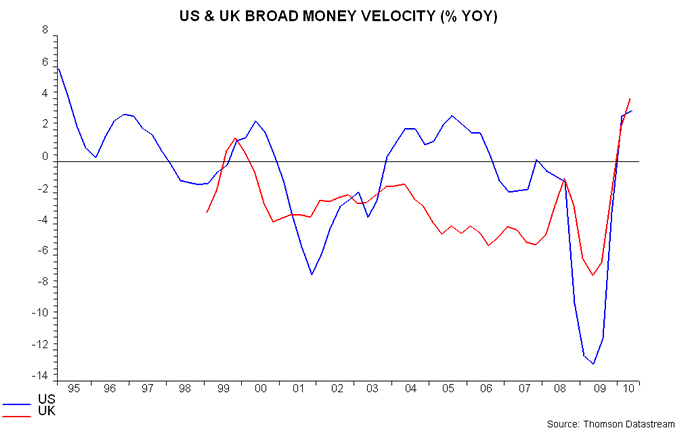Some well-known "monetarist" economists and commentators continue to cite weak broad money trends as a reason for fearing renewed recession and deflation. They were making similar claims a year ago. A post last September argued that the worries were overdone because a rise in the velocity of circulation was likely to compensate for sluggish monetary expansion.
In terms of Irving Fisher's "equation of exchange" MV = PY, MV would rise respectably as velocity V reversed its large fall during the recession, resulting in both higher prices P (i.e. no deflation) and growth in real output Y.
A rise in velocity was expected because central bank policy easing had resulted in interest rates on bank deposits falling to historically low levels that, moreover, failed to compensate for inflation and taxes. Consumers and companies, therefore, would seek to economise on money holdings, leading to increased investment in other financial assets and, ultimately, higher spending on goods and services.
The chart shows annual rates of change of US and UK broad money velocity, defined from the Fisher equation as PY / M, with P = consumer prices and Y = real GDP. The money supply measures used were M2 for the US and M4 excluding money holdings of non-bank financial intermediaries for the UK. Consistent with the forecast, velocity rose by 3.2% in the US and by 4.0% in the UK in the year to the second quarter – the largest annual increases since 1995 and 1980 respectively.
US M2 and UK M4 grew by only 1.7% and 1.1% in the year to the second quarter but the latest three-month rates of increase are stronger, at 6.3% and 6.0% annualised respectively (M2 as of 26 July, M4 as of June). With velocity likely to continue to trend higher until central banks normalise interest rates, current broad money trends appear consistent with further solid expansion of nominal output PY.